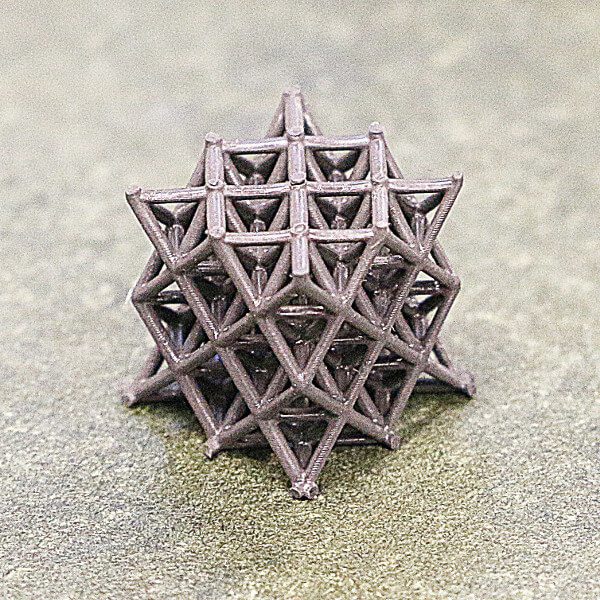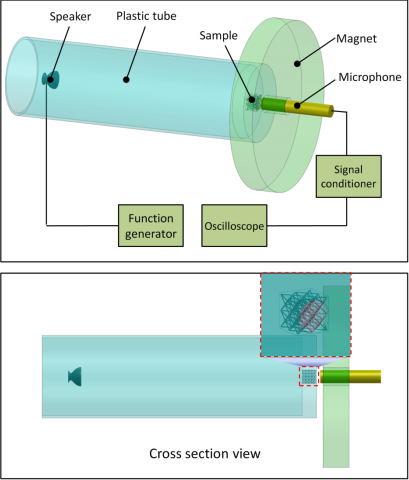Researchers from USC Viterbi School of Engineering have developed 3D printed metamaterials that can switch between active control and passive states, enabling control of acoustic and optical waves.
A team of researchers at the USC Viterbi School of Engineering has just developed acoustic metamaterials that can be controlled via magnetic fields. While 3D printed metamaterials are traditionally fixed in their geometry, this newly developed material can be remotely switched on and off.
The materials have a precisely designed geometric structure, and showcase unique properties like the ability to block sound waves and mechanical vibrations. Using the magnetic field, the 3D printed metamaterials can be altered between active control and passive states.
“When you fabricate a structure, the geometry cannot be changed, which means the property is fixed. The idea here is, we can design something very flexible so that you can change it using external controls,” explained Qiming Wang, assistant professor of civil and environmental engineering at USC Viterbi.
Applications for this newly developed material include noise cancellation, vibration control and sonic cloaking. The team also suggests that these metamaterials could be used to improve existing communication systems.
These metamaterials are able to control environmental sounds and structural vibrations, both of which share similar waveforms. By 3D printing deformable material that contain iron particles in a lattice structure, the team was able to use the magnetic field to compress the metamaterials.
“You can apply an external magnetic force to deform the structure and change the architecture and the geometry inside it. Once you change the architecture, you change the property. We wanted to achieve this kind of freedom to switch between states. Using magnetic fields, the switch is reversible and very rapid,” Wang added.

How These Sound Blocking 3D Printed Metamaterials Work
In order for this mechanism to achieve its special abilities, the metamaterial structures rely on the properties of negative modulus and negative density. These attributes enable the material to trap sound or vibration within its structure, preventing resonance from passing through.
The concept might be a bit difficult to wrap your mind around, but the researchers do a nice job of explaining how the properties of these metamaterials work. Objects that contain a negative modulus tend to attract you, pulling you towards them as you exert force on them. On the other hand, objects that exhibit a negative density work in a similarly contradictory way. Instead, when you push these objects away from you, they tend to move toward you. Typically, when you push an object that has normal attributes, it will push back against you.
Each negative property independently ensures that noise or vibrations are blocked at a certain frequency range. In combination however, they allow the noise to pass through the object. By switching the magnetic field, the researchers are able to maintain versatile control over the metamaterial, switching among double-positive (sound passing), single-negative (sound blocking), and double-negative (sound passing).
The fabrication system allows the team to 3D print the metamaterials using a beam diameter between a micron to a millimeter. The smaller the beam, the higher the frequency that can be controlled.
In the future, the team plans to demonstrate negative refraction in these metamaterials. This property allows a wave pass through a material and come back at an unnatural angle. This phenomenon, which Wang “anti-physics”, will be studied by the team when they are able to 3D print larger structures. Additionally, the researchers intend to scale up or scale down the fabrication system for these metamaterials, providing more opportunity to work on a wider range of wavelengths.
The study was conducted by USC Viterbi Assistant Professor Qiming Wang, PhD student Kun-Hao Yu, MIT Professor Nicholas Fang, and University of Missouri Professor Guoliang Huang. The research paper, entitled “Magnetoactive Acoustic Metamaterials”, was recently published in Advanced Materials.

Source: USC Viterbi
Website: LINK
Schreibe einen Kommentar
Du musst angemeldet sein, um einen Kommentar abzugeben.